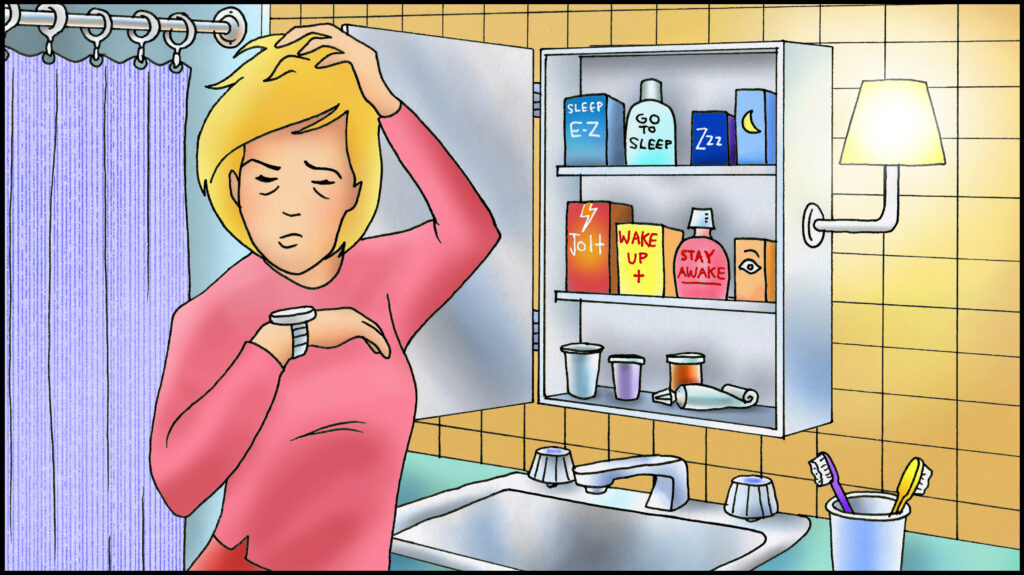Our bodies are designed with an innate 24-hour cycle of energy and hormone production. Light enters the eyes and stimulates the brain to wake. When it gets dark, melatonin is secreted which makes the brain feel sleepy. If that cycle is disrupted, as is the case with working rotating shifts, the sleep and wake cycle can be thrown off its natural course.
Schedules for shift-workers often require them to go to bed as the sun rises or report for duty as the sun is setting. Working in opposition to the body’s natural sleep and wake cycle can lead some to resort to the use of drugs to help them cope. The primary problem with using alertness or sleep aids is dealing with the side effects that accompany them.
Labels for prescription and over-the-counter alertness aids warn that they may cause insomnia, anxiety, nausea or jitteriness. More serious warnings are those that include negative impacts on heart rhythm. These side effects are compounded by caffeine consumption. This medication is best used only as needed rather than on a regular basis. It can become habit forming. Monitoring by your doctor is highly recommended in the use of this or any drug.
According to the CDC, data from the National Health and Nutrition Examination Survey 2005-2010, about 4% of U.S. adults age 20 and over used prescription sleep aids in the past month, which equates to just over 8 million people. Sleeping pills can be particularly helpful when traveling or during times of great stress, but it’s best not to rely on them long-term. Drugs that help us sleep also come with a list of possible side effects that include dizziness, headache, daytime memory and performance problems, and gastrointestinal issues. Alcohol increases the sedating effects of sleep aids. It’s best to avoid alcohol when using this type medication. Your doctor will discuss risks and benefits to help you determine the right medication, if needed.
There is a more natural approach to maintaining a healthy sleep and wake cycle. Generally speaking, if you get plenty of sleep, staying awake is easier. This simple equation begins with making sleep a priority. Schedule sleep in coordination with the month’s work schedule. Prepare your sleep environment so that it’s conducive to rest. This includes shutting out noise, setting cooler temperatures, installing black-out shades to prevent light, and keeping comfortable bedding. A clean, uncluttered room helps the mind relax which helps the body relax. Avoid heavy meals, alcohol, and caffeine close to bedtime since these can interfere with deep sleep. Movement, like walking for 20-30 minutes, followed by stretching, helps relieve tension and anxiety. The Progressive Muscle Relaxation technique can bring on rest. The idea is to tense a muscle group, then relax it. Begin by raising your eyebrows as high as possible, hold for 5 seconds, then completely relax them, feeling tension drop. Next, squint your eyes tightly for 5 seconds, then fully relax them. Move down to the shoulders, tighten and relax, and progressively move down your body tightening and relaxing muscle groups until your body is tension free.
If you find that you’re still having trouble sleeping, you may need to talk with a sleep specialist. Sleep disorders are treatable.
MANAGING FATIGUE EDUCATIONAL PROGRAM | Scarlet Knight © 2021 Please Distribute to Others.




